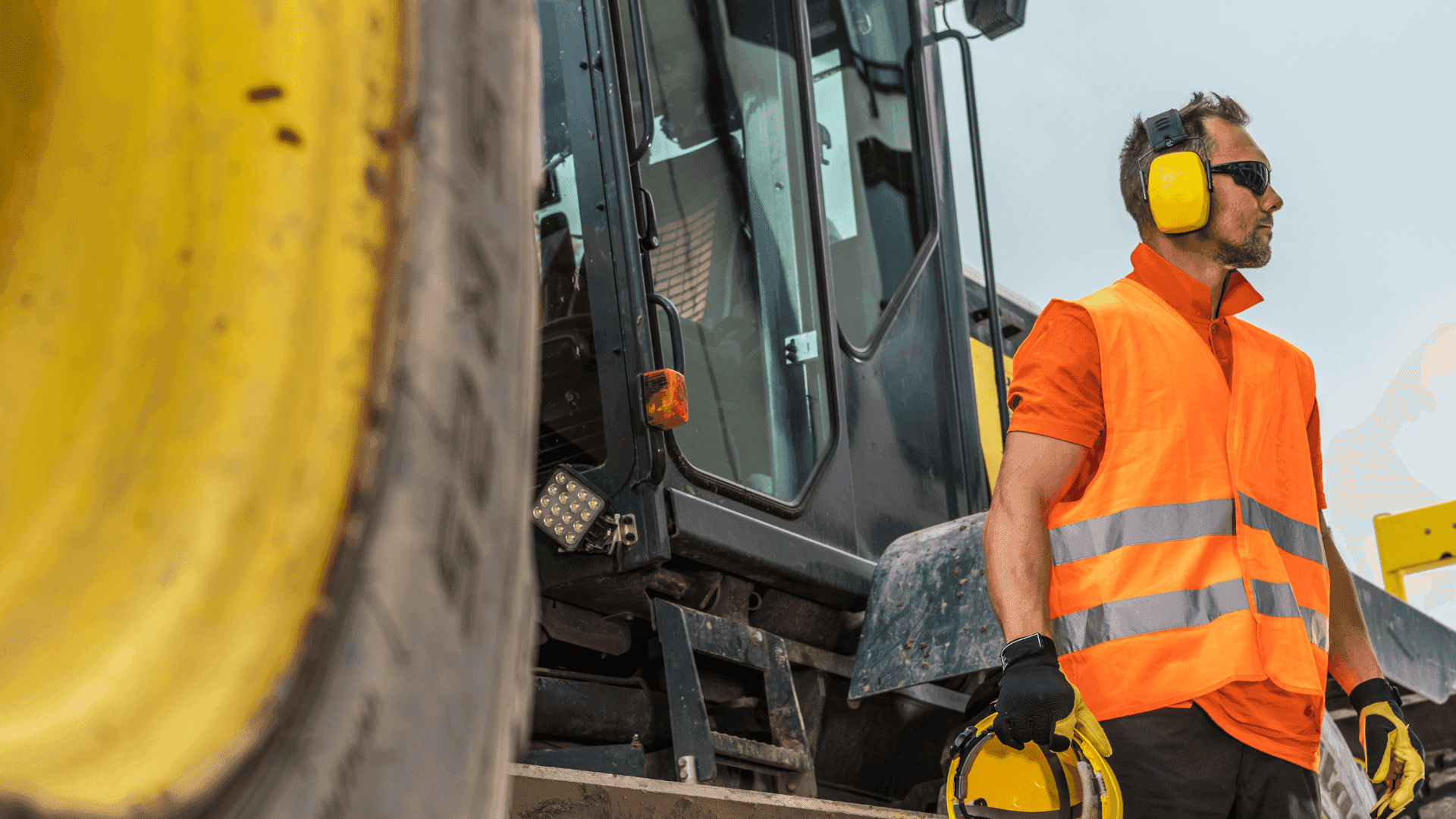Noise exposure is an unavoidable part of our daily lives. From the moment we leave our homes, we hear noise from all kinds of sources, whether it be construction work, car engines, listening to music or even just the sound of people bustling around.
When you take all that noise into account and then add our exposure to noise at work, it’s clear that we are continuously subjected to noise, with the only exception being when we are asleep.
As we get older, it’s completely normal for our hearing to deteriorate over time but excessive noise can also damage our ears.
Physically, sound and noise are the same; the difference is that noise is an unwanted sound. The effects of noise are progressive, slow and gradual and as there are no visual signs of damage, it often goes unnoticed.
Moreover, risks of this nature that can cause disability (and not mortality) are frequently overlooked, even though they can cause irreversible damage.
When it comes to noise at work, some industries have higher risks than others, people working in manufacturing, transport, mining, construction and agriculture are typically the most exposed to noise pollution.
What detrimental effects can noise in the workplace have on health and well-being? How can you reduce the effects of noise at work?
:quality(60)/1f8f22d9-b715-495a-8156-62cf561d84d8/53d9a8ed-69dc-4029-b5b8-67e3767d29bd.png)
Noise and its effects on health
According to the World Health Organisation (WHO), some of the effects of noise on health include:
- Hearing loss
- Discomfort and annoyance
- Cardiovascular disease and metabolic effects
- Decreased work performance
- Effects on the immune system
- Effects on sleep quality
- Negative impact on mental health, well-being and quality of life
The most common effect of exposure to noise at work is hearing loss, which may be accompanied by constant ringing (tinnitus).
You don’t need to work in an extremely noisy environment to suffer from the consequences above. People working in offices like call centres, for example, are exposed to constant auditory stimuli that can be damaging and stressful.
:quality(60)/1f8f22d9-b715-495a-8156-62cf561d84d8/26059e51-5700-4024-8164-441da7938741.jpg)
Hearing impairments have a negative impact on a person’s life and their overall well-being, this includes:
- Social isolation
- Having to change the way they communicate with work colleagues, friends and family
- Decreased ability to perceive environmental stimuli (warning signals, machinery sounds, etc.
- Reduced productivity
- Anxiety, irritability and low self-esteem
During health and safety training, social isolation can be the most helpful to make workers more conscious of the effects that excessive noise can have on health.
A basic and easy training exercise is to put on ear protectors with high attenuation (noise-reduction) and then try to communicate with others.
This exercise shows how difficult it is to hear. The person wearing the ear protectors will probably shout, causing discomfort to those around them. This can also work by playing familiar music, which will sound distorted and as though far away).
:quality(60)/1f8f22d9-b715-495a-8156-62cf561d84d8/cff35718-16bf-4a6d-8a30-8bb2408507d3.jpg)
How to minimise damage from noise at work?
- Distribute shifts to reduce the length of exposure
- Use noise-controlling equipment: sound-dampening equipment and soundproof cabins
- Wear personal protective equipment: ear defenders and earplugs
To avoid hearing damage and protect their employees, companies need to take some basic safety measures, starting by evenly distributing shift patterns amongst employees. This ensures noise pollution is spread between different workers, thus reducing exposure time.
The higher the noise level, the greater the risk of injury in a shorter amount of time.
In addition, machinery should include guards and sound-damping equipment to hinder sound waves and vibrations from travelling.
Ideally, all noise emitted by work equipment and machinery should be considered when purchasing new equipment.
Soundproof cabins can be used as an enclosure to isolate machinery that emits high levels of noise. They can also be used as a rest area in very noisy environments.
:quality(60)/1f8f22d9-b715-495a-8156-62cf561d84d8/6518a0b9-1ab6-4e36-95c4-8016ee93ab2f.jpg)
Finally, personal protective equipment (PPE) is essential. Safety measures and industrial safety equipment are not always enough to protect workers from excessive noise exposure, so hearing protection is a crucial barrier.
Providing they are used properly, hearing protectors have the ability to attenuate sounds that reach the human auditory system. The most commonly used are ear muffs and and ear plugs .
When noise exposure is above 85 decibels (dB), the use of hearing protection is required by law. The use of hearing protection should also be encouraged for noise above 80 dB.
:quality(60)/1f8f22d9-b715-495a-8156-62cf561d84d8/eb77949b-d053-4bcc-be31-1058d090994c.jpg)
Selecting the right type of hearing protection
In order to choose appropriate hearing protection , noise levels should be measured and then then the level of attenuation can be decided.
It’s important that the protection is not excessive, overprotection isolates a person from their environment, prevents communication with others and can even cause them to miss warning and danger signals.
When it comes to the effectiveness of hearing protection, fit, size and adjustability must be taken into account, not everyone has the same ear size and head shape.
There are many types of disposable and reusable ear plugs . Reusable earplugs must be cleaned for hygiene reasons (each manufacturer will provide instructions on how to do so). Ear defenders or ear muffs often come with spare parts and removable inner cups for easy maintenance.
Some ear defenders can also be mounted on compatible safety helmets to provide both head and hearing protection.
Comfort should never be overlooked. Uncomfortable PPE gets used far less than it should and this creates much greater risks.
:quality(60)/1f8f22d9-b715-495a-8156-62cf561d84d8/bb87c7db-ee8f-4549-9d53-68da7c28939c.png)
Remember that health always comes first, and safety should always be a priority, not just an afterthought.
Hearing damage is progressive and preventable but once the hearing has gone, it doesn’t come back.
Hearing impairments are irreversible and noise can lead to cardiovascular disease, psychological effects and reduced communication.
Take a look at our range of hearing protection . Safeguru provides optimum protection for all types of industries and activities.
Safeguru | Delivering a Safer Future
